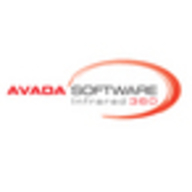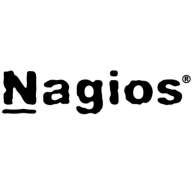

Nagios XI and Avada Software Infrared360 are monitoring solutions in IT infrastructure management. Avada Software Infrared360 seems to have the upper hand with its robust integrated features and ease of deployment.
Features: Nagios XI offers flexibility, extensive plugins library, and strong customer service. Infrared360 offers seamless integrations, less complicated setup, and built-in tools.
Room for Improvement: Nagios XI needs improvements in scalability, outdated architecture, and optimization for larger-scale deployments. Infrared360 needs enhancements in reporting features, alert system, and better data presentation.
Ease of Deployment and Customer Service: Nagios XI's deployment is time-consuming and complex, but it provides strong customer service. Infrared360 allows swift deployment, intuitive setup, with room for improved support responsiveness.
Pricing and ROI: Nagios XI has a high initial setup cost but offers substantial ROI over time. Infrared360 provides a balanced cost with faster ROI, making it a compelling choice against Nagios XI's higher upfront expenses.

Avada Software specializes in Enterprise Middleware solutions. Founded by some pioneers in SOA, MQ and J2EE technology, Avada’s Flagship product, Infrared360, is a holistic & innovative private cloud enabled portal providing self-service administration, monitoring, load testing, auditing & statistical reporting for Enterprise Middleware including IBM’s middleware stack of MQ, IIB (message broker), WAS, and Datapower, as well as other applications servers such as JBoss, TC Server, Weblogic, and other messaging technologies such as Tibco EMS and Kafka*.
Accessed via any web browser on any device, Infrared360 is a single web application, yet scales to 2500+ endpoints without deploying anything (no agents, no scripts) to those endpoints.
Using trusted ‘spaces’ and delegated visibility and control, the portal uniquely provides different business units or even different application users virtual ‘spaces’ in which to work. Within those spaces are only the objects and resources the user has been granted visibility. Role policy dictates permissions on those resources.
It is the ONLY Enterprise Messaging Solution with a built in SOA engine that lets you leverage internal and external services for managing and correcting problems within your middleware messaging environment.
*Kafka coming soon
Nagios XI provides monitoring of all mission-critical infrastructure components, including applications, services, operating systems, network protocols, systems metrics, and network infrastructure. Third-party add-ons provide tools for monitoring virtually all in-house and external applications, services, and systems.
Nagios XI uses a powerful Core 4 monitoring engine that provides users with the highest levels of server monitoring performance. This high degree of performance enables nearly limitless scalability and monitoring powers.
With Nagios XI, stakeholders can check up on their infrastructure status using the role-based web interface. Sophisticated dashboards enable access to monitoring information and third-party data. Administrators can easily set up permissions so users can only access the infrastructure they are authorized to view.
Nagios XI Benefits and Features
Some of the benefits and top features of using Nagios XI include:
Reviews from Real Users
Nagios XI stands out among its competitors for a number of reasons. Several major ones are its integration options and monitoring abilities, as well as its alerting features.
David P., a senior DevOps engineer at EML Payments Ltd, writes, “We use Nagios as a network discovery tool. We use Nagios to maintain our uptime statistics and to monitor our services. It has allowed us to be much more sophisticated in our monitoring and alerting.”
An IT-OSS manager at a comms service provider notes, “Nagios XI has a custom API feature, and we can expose custom APIs for our integration. This is a great feature.”
We monitor all Server Monitoring reviews to prevent fraudulent reviews and keep review quality high. We do not post reviews by company employees or direct competitors. We validate each review for authenticity via cross-reference with LinkedIn, and personal follow-up with the reviewer when necessary.